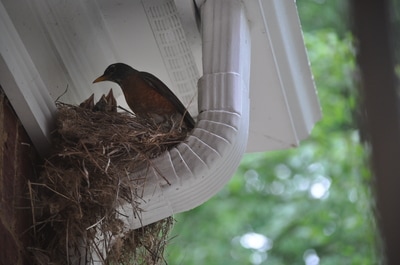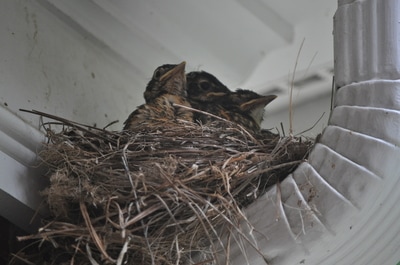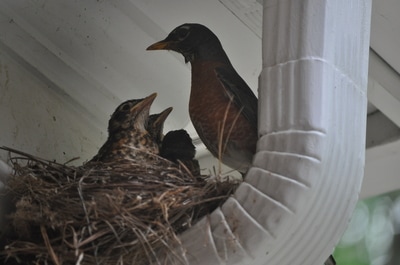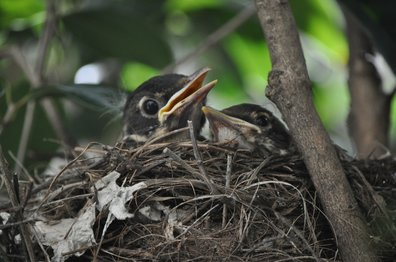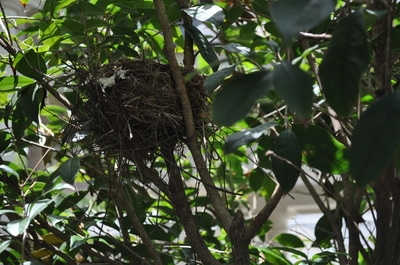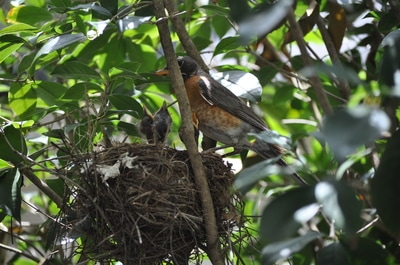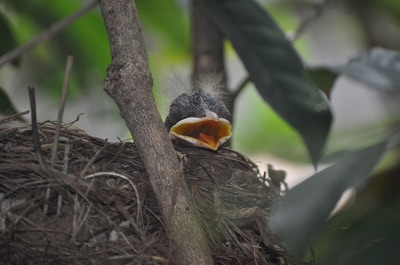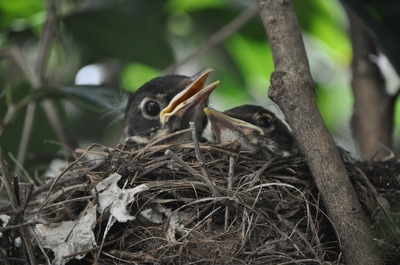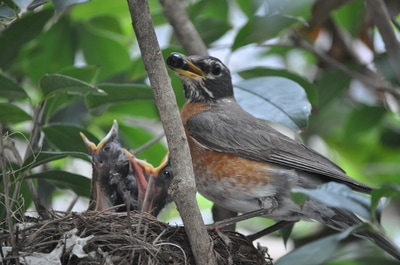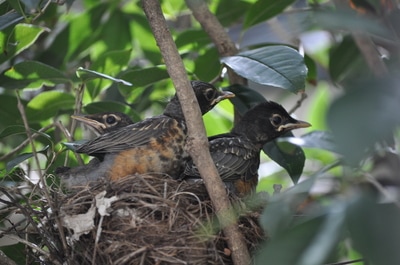In Spotlight: Climate Change And Food Security
|
On April 29th, 2017, as I took my place at the Peoples’ Climate March on the streets of Washington D.C., I couldn't help but be encouraged by the energy reverberating from my fellow activists. 200,000 strong, we stood resolute with a unified message: we were there to pledge our commitment to protect, preserve and defend nature.
However, only weeks after this historic march the Trump Administration has ignored both science and our voices and has pulled the United States out of The Paris Climate Accord. As unfortunate as the recent turn of events have been it has only strengthened my resolve. I am now committed to working even harder to advocate for our environment and supporting organizations that can help us become better stewards of our wildlife and natural resources. For the last 3.5 billion years, life has emerged, evolved and has consistently been sustained on our planet. Mother Nature has been gracious to all life forms including the human race. While she is resilient and her generosity unconditional, it's time we take responsibility for our survival and our actions. From here on, it is up to us to choose the quality of the air we breathe, the sanctity of the rivers we drink from and the integrity of the soil that nourishes our crops. This edition of Wildlife In Spotlight focuses on climate change and its impact on food security, both for humans and some migratory birds. Find out why some fruiting trees need “chill hours’ and how warmer winters are impacting crop yields. In addition to that, you can, also, learn about the challenges shorter winters are imposing on the migratory birds - the pied flycatchers and the great tits in fending for their nestlings. Both species overwinter in Africa and return to the Dutch woodlands to breed and raise their young in the Spring. |
Climate Change - How did we get here?
The last few centuries have provided ample evidence demonstrating the potential of human ingenuity. This was best highlighted in the 18th century with the advancements achieved during the industrial revolution. The industrial revolution completely transformed the socio- economic landscape of the world. It created social mobility for most people and innovation accelerated the growth of trade and commerce. Mass production of goods was facilitated by the steam engine technology, which was powered by coal, a fossil fuel. Fast forward this movement to the 21st century and we find ourselves in a world where almost every product we consume is dependent on crude oil, also a fossil fuel.
While the use of fossil fuels at the advent of the industrial revolution was a viable option it left us somewhat blindsided of its impact on our planet. Scientific evidence now indicates that carbon-emission from burning fossil fuel is one of the leading causes of global warming.
While the use of fossil fuels at the advent of the industrial revolution was a viable option it left us somewhat blindsided of its impact on our planet. Scientific evidence now indicates that carbon-emission from burning fossil fuel is one of the leading causes of global warming.
|
According to NASA, “Most climate scientists agree the main cause of the current global warming trend is human expansion of the "greenhouse effect"1 — warming that results when the atmosphere traps heat radiating from Earth toward space. Certain gases in the atmosphere block heat from escaping. Long-lived gases that remain semi-permanently in the atmosphere and do not respond physically or chemically to changes in temperature are described as "forcing" climate change… Gases, such as water vapor, which respond physically or chemically to changes in temperature are seen as "feedbacks." Gases that contribute to the greenhouse effect include water vapor, carbon dioxide, methane, and nitrous oxide.”
Global warming has altered our climate in a number of different ways. These changes include rising temperatures, warmer winters (fewer days with frost), loss of Artic ice, rising sea levels, increase in the intensity of hurricanes, altered precipitation, increased drought periods and heat waves. Any one of these changes to the Earth’s climate negatively impacts the quality of life for all of humanity. Although most people acknowledge climate change there are still skeptics who doubt the science. However, irrespective of what people believe, the circadian rhythms of nature are not influenced by human opinion. They respond to real-time changes in the environment. When these changes happen slowly over hundreds and thousands of years nature adapts. However, when the environment experiences rapid changes over just a few decades, as it has in the recent past, then nature is left at a disadvantage. The signs that it is stressed and unable to cope with these changes are becoming obvious. The implications of continuing on this trajectory is pernicious to the human race. To put this in context, let's talk about the impact of frost-free winter days on crop production. |
. ...Although most people acknowledge climate change there are still skeptics who doubt the science. However, irrespective of what people believe, the circadian rhythms of nature are not influenced by human opinion. They respond to real-time changes in the environment... |
Dominos Effect
A number of fruiting (and nut) trees like peaches, almonds, and pistachios need a set number of “chill hours” – temperature between 32 - 45 Fahrenheit, between October and February to produce a good yield in the summer. The number of chill hours not only varies from fruit to fruit, but also between varieties. For example, Peaches need around 600 -1000 chill hours while almonds and pistachios need approximately 500-600 and 700-900 chill hours, respectively. In other words, these plants need to be dormant for those set hours to have uniform and viable blooms, which allows for a good harvest.
Over the last few years, there have been publications that have studied and projected the impact of global warming on chill hours on crops grown in California. While there is enough evidence to support the correlation between the two in California it might be too early to definitely conclude that for my home state, Georgia. The lack of chill hours has affected Georgia crops only in the last couple of years, so this may or may not be indicative of new and shifting weather patterns. Nonetheless, I wanted to get a first-hand account from local Georgia farmers and understand the impact, if any, these last two milder winters have had on our peach and blueberry crops. One of the farmers I spoke to was Robert Dickey, a fourth generation peach farmer. He explained how a peach tree sets blooms and the importance of chill hours for a successful peach crop. “Every summer the [peach] trees grow new wood [branches] and sets bud. If the buds don’t get the right amount of chill hours they don’t bloom, or they fall off in the winter and are not viable.” The winter of 2015, the peach trees in Georgia had only 700 chill hours, which cut the crops yield by 20 percent the following summer. This year the thermometers on Mr. Dickey’s Farm recorded only 600 chill hours for this season. Mr. Dickey and other farmers I spoke to reported losses between 75-80 percent of the peach crop for this season. This was primarily because of two reasons; lack of chill hours and a late March freeze. Although most peach farmers grow a wide range of cultivars to compensate for any fluctuations in chill hours this year’s winter was exceptionally rough. The varieties that needed 650-1000 chill hours never set bloom because of the decreased chill hours. On the other hand, those cultivars that needed only 600 chill hours to set bloom, lost their blooms to the late March freeze.
Even though, Georgia is known as the Peach State, blueberry farming has gained popularity in recent years and has become a critical crop for the State’s economy. Depending on the variety, blueberries need anywhere from 350-700 chill hours for a strong crop yield. Given the variable weather conditions these last couple of years they, too, have suffered from erratic fruiting and a lower crop yield. Blueberries and peach sales add 335 million and 53 million dollars respectively to GA’s 74.9 billion dollar agribusiness industry every year.
As stated before, it is unclear at this point if frost-free winters are the new norm for the peach and blueberry crops in Georgia. But it is evident that changing weather patterns like fewer chill hours caused due to global warming can significantly impact crop yields. While reduced chill hours impacts only a few fruiting crops, extreme drought and excessive precipitation also, consequences of climate change have a much larger impact on staple global crops like rice and wheat.
Over the last few years, there have been publications that have studied and projected the impact of global warming on chill hours on crops grown in California. While there is enough evidence to support the correlation between the two in California it might be too early to definitely conclude that for my home state, Georgia. The lack of chill hours has affected Georgia crops only in the last couple of years, so this may or may not be indicative of new and shifting weather patterns. Nonetheless, I wanted to get a first-hand account from local Georgia farmers and understand the impact, if any, these last two milder winters have had on our peach and blueberry crops. One of the farmers I spoke to was Robert Dickey, a fourth generation peach farmer. He explained how a peach tree sets blooms and the importance of chill hours for a successful peach crop. “Every summer the [peach] trees grow new wood [branches] and sets bud. If the buds don’t get the right amount of chill hours they don’t bloom, or they fall off in the winter and are not viable.” The winter of 2015, the peach trees in Georgia had only 700 chill hours, which cut the crops yield by 20 percent the following summer. This year the thermometers on Mr. Dickey’s Farm recorded only 600 chill hours for this season. Mr. Dickey and other farmers I spoke to reported losses between 75-80 percent of the peach crop for this season. This was primarily because of two reasons; lack of chill hours and a late March freeze. Although most peach farmers grow a wide range of cultivars to compensate for any fluctuations in chill hours this year’s winter was exceptionally rough. The varieties that needed 650-1000 chill hours never set bloom because of the decreased chill hours. On the other hand, those cultivars that needed only 600 chill hours to set bloom, lost their blooms to the late March freeze.
Even though, Georgia is known as the Peach State, blueberry farming has gained popularity in recent years and has become a critical crop for the State’s economy. Depending on the variety, blueberries need anywhere from 350-700 chill hours for a strong crop yield. Given the variable weather conditions these last couple of years they, too, have suffered from erratic fruiting and a lower crop yield. Blueberries and peach sales add 335 million and 53 million dollars respectively to GA’s 74.9 billion dollar agribusiness industry every year.
As stated before, it is unclear at this point if frost-free winters are the new norm for the peach and blueberry crops in Georgia. But it is evident that changing weather patterns like fewer chill hours caused due to global warming can significantly impact crop yields. While reduced chill hours impacts only a few fruiting crops, extreme drought and excessive precipitation also, consequences of climate change have a much larger impact on staple global crops like rice and wheat.
|
...As we move forward, do we now look at global warming and its implications on food security as an environmental issue, or an economic issue, or a humanitarian issue?... |
If these new weather patterns indeed become the new norm then one doesn’t have to be an economist to conclude the effect of poor crop yields on pricing. In any market economy, supply and demand sets the price for all commodities. While higher food prices will impact all of us, the worse hit amongst us would be the world's most impoverished who rely heavily on staple crops such as rice and wheat. According to World Bank, 10.7 percent of the world’s population currently lives on $1.90 a day. Although World Bank has made steady progress in helping millions of people overcome poverty, their challenges are summed up in this excerpt from their website, “The work to end extreme poverty is far from over, and a number of challenges remain…for those who have been able to move out of poverty, progress is often temporary: economic shocks, food insecurity, and climate change threaten to rob them of their hard-won gains and force them back into poverty”…
As we move forward, do we now look at global warming and its implications on food security as an environmental issue, or an economic issue, or a humanitarian issue? |
What affects us, humans, also, affects other species. While we can rely on research and data to forewarn us of what may be ahead, other species have to rely on cues from nature itself. The length of the day, change of the seasons and the earth’s magnetic field are some of the cues that wildlife uses to prepare themselves for the next phase of their life cycle. As resident species start to align themselves with these changes regionally, migratory species embark on some of the most arduous journeys across land, air, and water. Migratory birds are especially awe-inspiring in the journeys they undertake (interactive map). They can fly for hundreds and thousands of miles in a single stretch. Considering their size, it is truly remarkable what they can accomplish both in endurance and flight.
Despite my affinity for the birds, I must confess, I know very little about them. For the most part, I enjoy their cheerful presence in my garden from a distance. These chirpy visitors stop by for a quick splash in the birdbath or in search of food. But, my favorite visitors, of course, are the baby birds. If I am lucky I might spot a couple fledging in the garden. However, my very first up-close and personal experience with a bird was back in the Spring of 2012 when an American Robin decided to build a nest just outside my kitchen window. The first few days as the birds built their nest and settled in I was curious, but not overly obsessed. I had seen birds building nest before. But then, one day there was a flurry of activity at the nest. It wasn’t until I saw tiny beaks peaking over the rim of the nest that I realized that the eggs had hatched! I was hooked! The next few days I used my camera to document the endless excitement in the nest. Every day the birds were up at the crack of dawn and the parents made countless trips to the nest with yummy treats, which the babies devoured in seconds. In a matter of days, they grew from being tiny, almost featherless babies to little fluff balls. In the meantime, I am pretty sure the parents lost a few ounces of body fat fending for their chicks. The parents make about 100 trips a day to and from the nest in search of food and a baby robin can eat up to 14 feet of earthworms during their two-week nest life along with other bugs.
Despite my affinity for the birds, I must confess, I know very little about them. For the most part, I enjoy their cheerful presence in my garden from a distance. These chirpy visitors stop by for a quick splash in the birdbath or in search of food. But, my favorite visitors, of course, are the baby birds. If I am lucky I might spot a couple fledging in the garden. However, my very first up-close and personal experience with a bird was back in the Spring of 2012 when an American Robin decided to build a nest just outside my kitchen window. The first few days as the birds built their nest and settled in I was curious, but not overly obsessed. I had seen birds building nest before. But then, one day there was a flurry of activity at the nest. It wasn’t until I saw tiny beaks peaking over the rim of the nest that I realized that the eggs had hatched! I was hooked! The next few days I used my camera to document the endless excitement in the nest. Every day the birds were up at the crack of dawn and the parents made countless trips to the nest with yummy treats, which the babies devoured in seconds. In a matter of days, they grew from being tiny, almost featherless babies to little fluff balls. In the meantime, I am pretty sure the parents lost a few ounces of body fat fending for their chicks. The parents make about 100 trips a day to and from the nest in search of food and a baby robin can eat up to 14 feet of earthworms during their two-week nest life along with other bugs.
American robin - Hatchlings born April 2012.
Click on the image to enlarge
Click on the image to enlarge
What I had not realized back in 2012, but did so recently is that the birds have to synchronize the hatching of the chicks to the availability of bugs. It turns out that bugs are in ample supply for a very short period of time during the Spring. Given the large number of critters each baby bird needs, the hatching of the chicks has to be perfectly aligned with food supply. If not, it creates a phenological mismatch and the chicks are at risk of dying from starvation.
As a result of climate change, two migratory birds – the pied flycatcher and the great tits have experienced this phenological mismatch first hand. Both species overwinter in Africa and come Spring they fly north to the Dutch woodland to breed and raise their young. However, for the last few decades Spring has been arriving two weeks earlier than it used to in the Netherlands. This means new leaves sprout two weeks early, and hence caterpillars emerge two weeks earlier. However, the environmental cues, that the birds use to start their migration, have not changed in Africa. Therefore they arrive in the Netherlands long after the caterpillars have peaked. Caterpillars are the main source of food for the hatchlings of both the pied flycatcher as well as the great tits. If the food ration requirements of the baby robins was any indicator of what parent birds need to provide to successfully raise their young, it is easy to conclude the fate of the chicks born to these two migratory birds. A study conducted to evaluate the impact of climate change on the pied flycatcher concluded that the phenological mismatch has contributed to the population decline by 90 percent in the last few decades.
It is fairly easy to overlook how climate change is affecting other species. However, we can no longer be indifferent given that population decline or loss of species have serious implications for the human race . Let’s consider, for instance, the rather mundane task the birds undertake of foraging for their chicks. What might seem completely inconsequential for the human existence is in fact an invaluable eco-service provided by birds in the way of pest control not only for farmlands but also for hardwood forests. This excerpt from ‘What has nature ever done for us’ By Tony Juniper sheds some light on the economic value of this vital service birds provide in pest control.
As a result of climate change, two migratory birds – the pied flycatcher and the great tits have experienced this phenological mismatch first hand. Both species overwinter in Africa and come Spring they fly north to the Dutch woodland to breed and raise their young. However, for the last few decades Spring has been arriving two weeks earlier than it used to in the Netherlands. This means new leaves sprout two weeks early, and hence caterpillars emerge two weeks earlier. However, the environmental cues, that the birds use to start their migration, have not changed in Africa. Therefore they arrive in the Netherlands long after the caterpillars have peaked. Caterpillars are the main source of food for the hatchlings of both the pied flycatcher as well as the great tits. If the food ration requirements of the baby robins was any indicator of what parent birds need to provide to successfully raise their young, it is easy to conclude the fate of the chicks born to these two migratory birds. A study conducted to evaluate the impact of climate change on the pied flycatcher concluded that the phenological mismatch has contributed to the population decline by 90 percent in the last few decades.
It is fairly easy to overlook how climate change is affecting other species. However, we can no longer be indifferent given that population decline or loss of species have serious implications for the human race . Let’s consider, for instance, the rather mundane task the birds undertake of foraging for their chicks. What might seem completely inconsequential for the human existence is in fact an invaluable eco-service provided by birds in the way of pest control not only for farmlands but also for hardwood forests. This excerpt from ‘What has nature ever done for us’ By Tony Juniper sheds some light on the economic value of this vital service birds provide in pest control.
"... wood production can be massily impacted by pest. One source of widespread damage comes from western spruce budworm. These caterpillars of a common moth infest the buds of various coniferous trees across a large area of North America. When conditions are right they can visibly defoliate large areas of forest, as their numbers grow to plague-like proportions.
Fortunately, a number of songbirds like to eat budworms, especially a large-billed bird called the evening grosbeak…
Two scientists, John Takekawa and Edward Garton, tried to find out what the impact of the birds actually was and to translate that into some financial numbers. They went into the forest and collected information on what the birds were eating and when. On one particular eleven-hectare study plot, the grosbeak flocks were estimated to have eaten about 9 million budworms in just one month and to have done this during the period when the pests are the their most vulnerable.
When the work of other birds was taken into account the total budworms consumed on that same area was nearly 13 million. The birds reduced the need for spraying and, according to the researchers, were protecting about a quarter of the economic value of the forests. The dollar value of the brids work in controlling pests was estimated at about $1,500 per hectare per year- and that was the going rate in 1984. Not surprisingly, this and other works suggests that it would be rational to manage forest with more birds and fewer pesticides."...
Fortunately, a number of songbirds like to eat budworms, especially a large-billed bird called the evening grosbeak…
Two scientists, John Takekawa and Edward Garton, tried to find out what the impact of the birds actually was and to translate that into some financial numbers. They went into the forest and collected information on what the birds were eating and when. On one particular eleven-hectare study plot, the grosbeak flocks were estimated to have eaten about 9 million budworms in just one month and to have done this during the period when the pests are the their most vulnerable.
When the work of other birds was taken into account the total budworms consumed on that same area was nearly 13 million. The birds reduced the need for spraying and, according to the researchers, were protecting about a quarter of the economic value of the forests. The dollar value of the brids work in controlling pests was estimated at about $1,500 per hectare per year- and that was the going rate in 1984. Not surprisingly, this and other works suggests that it would be rational to manage forest with more birds and fewer pesticides."...
While pest control may be an obvious benefit that all of us can appreciate I was surprised to learn that birds also provide critical healthcare services for humans. A recent study conducted by two researchers, John Swaddle and Stavros Calos concluded that there is in fact a direct correlation between bird diversity and level of human infection. “Where bird variety was higher, the rate of human infection was found to be lower. With more types of birds, the mosquitoes that transmitted the virus had more chances to feed, and were thus less reliant on human to complete their life cycle.” (Excerpt from, ‘What has nature Ever Done for us?’ - By Tony Juniper)
We are a part of a whole - each species plays an important role in the complex and intricate web of life. So, loss of species or changes to our environment can have significant long-term implications for the entire planet. As we look towards the future, we can all commit ourselves to making small changes in our own lives to restore the health of our planet. Whether we choose to go paperless or attempt to phase out fossil fuel, every one of us has the potential to protect, preserve and defend this beautiful planet we call home.
We are a part of a whole - each species plays an important role in the complex and intricate web of life. So, loss of species or changes to our environment can have significant long-term implications for the entire planet. As we look towards the future, we can all commit ourselves to making small changes in our own lives to restore the health of our planet. Whether we choose to go paperless or attempt to phase out fossil fuel, every one of us has the potential to protect, preserve and defend this beautiful planet we call home.
Who To Support
The organizations listed below are environmental advocacy groups that are at the forefront of wildlife and environmental policy legislations. Please take a few minutes to visit their website and pledge your support by signing petitions, making a donation and staying informed. Please send your monetary contributions directly to an organization of your choice.
National Resources Defense Council
350.org
Climate reality project
Alliance for Climate Education
Center for Biological Diversity
Earth Guardians
World Wildlife Fund
International Fund for Animal Welfare
National Wildlife Federation
Earth Justice.
Sierra CLub
Union of Concerned Scientist
Wildlife Conservation Society
The organizations listed below support bird conservation and are at the forefront of policy and legislation. Please take a few minutes to visit their website and pledge your support by signing petitions, making a donation and staying informed. Please send your monetary contributions directly to an organization of your choice.
Audobon Society
RSPB
Birdlife International: Birdlife International has a global presence and they partner with several bird conservation groups on every continents. You can visit their partners page and then view the list of organizations they partner with by clicking on the continent.
The organizations listed below are environmental advocacy groups that are at the forefront of wildlife and environmental policy legislations. Please take a few minutes to visit their website and pledge your support by signing petitions, making a donation and staying informed. Please send your monetary contributions directly to an organization of your choice.
National Resources Defense Council
350.org
Climate reality project
Alliance for Climate Education
Center for Biological Diversity
Earth Guardians
World Wildlife Fund
International Fund for Animal Welfare
National Wildlife Federation
Earth Justice.
Sierra CLub
Union of Concerned Scientist
Wildlife Conservation Society
The organizations listed below support bird conservation and are at the forefront of policy and legislation. Please take a few minutes to visit their website and pledge your support by signing petitions, making a donation and staying informed. Please send your monetary contributions directly to an organization of your choice.
Audobon Society
RSPB
Birdlife International: Birdlife International has a global presence and they partner with several bird conservation groups on every continents. You can visit their partners page and then view the list of organizations they partner with by clicking on the continent.
